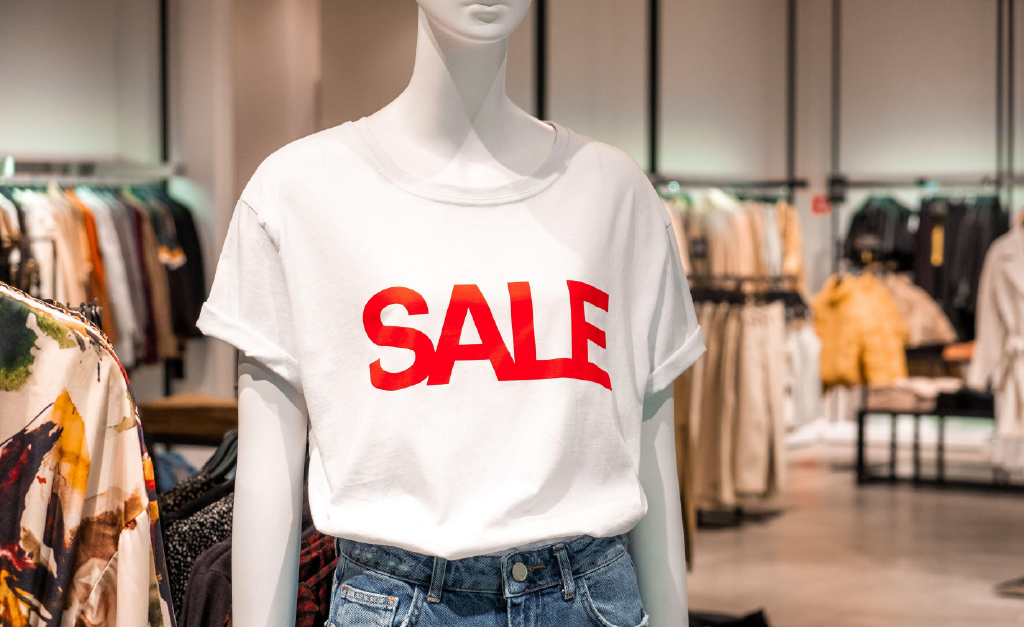
With stores in NSW only re-opening in the last couple of weeks after three months in lockdown, and stores in Victoria still yet to open, almost half of fashion retailers’ store footprints have been closed for most of the winter.
Unable to get into stores to retrieve stock, fashion retailers are now faced with and unenviable task of reopening with clothing that is not right for the season or the weather. Add to this, a supply chain that has pretty much ground to a halt and retailers’ merchandise teams are going to have to think creatively about how they manage their stock over the next six months. In this article, we look at two options, to pack away winter stock until next Autumn/Winter or to discount it heavily to clear it at almost ‘give-away’ prices.

The case for the pack-away strategy
The first time I had ever heard of the ‘pack-away’ strategy, was in my first role in Australian retail some 17-years ago. When the buyer stood up and presented this strategy, I was perplexed. Certainly, in all my training and experience in the UK, having stores pack away stock was an absolute no-no. The thinking here was that if the customer didn’t want it this year, then they were very unlikely to want it next. Then there is the cost of handling, transportation if it is going back to a distribution centre, or the likelihood that come next year, it would be lost forever in the back of the stockroom, never to see the light of day again. And let’s face it, the money tied up in that stock for the next six months, could be better used to buy new, on-trend product that would turn faster. The reason that this buyer thought it was an acceptable action to take was because their only KPI was gross margin, there was no KPI for either terminal stock, stockturn or carrying costs of inventory. When you add in these KPIs, then the ‘clear as you go’ policy makes much more sense…until now
What is different about the current situation is two-fold, firstly, stores have been closed and the customer has not had an opportunity to shop (apart from online). This is not a question of putting a clearance cycle on some poor selling stock that you ordered too much of. This is the entire stock in half of your stores. To mark it down and clear it would be a costly and unprofitable exercise. Secondly, and perhaps more importantly, the issues with supply chain and manufacturing are going to take many months to resolve themselves. Many retailers are reporting that stock booked for the busy Christmas period may not arrive until end January. It is not just the problem with shipping and transport, factories are struggling to get raw materials, even down to the thread to sew enough garments.
The case for the ‘give-away’ strategy
With so much stock in the wrong place and at the wrong time, packing it all away and replacing it with Spring/Summer stock is no easy task. However, as stores re-open, customers starved of that physical shopping experience will be hugely disappointed if they walk into their favourite store only to be faced with last season’s winter merchandise. Retailers need to work quickly to clear the winter merchandise and bring in summer lines. With so much stock, clearing it is going to mean deep discounting. One strategy employed by UK retailers who faced the same situation when they re-opened in April, was offering no-return mystery boxes at hugely discounted prices. Customers could choose their size, and the prices of boxes varied, so depending on the brand, customers could pay anything from £30 ($55) to £100 ($180) and receive a box of goodies discounted by up to 80%. Customers then either kept the clothing and accessories for themselves, re-gifted or re-sold on sites like Facebook Marketplace. It is certainly a quick and effective way to sell through large volumes of inventory.

So, which is the best option?
In the current situation, retailers would be well advised to employ a combination of both strategies, deciding which product to pack and which to markdown based on the following:
-
- Seasonal core/key lines can be easily packed away and re-coded for next year
- Any products whose trend is on a downward trajectory should be heavily discounted and popped in that mystery box
- Any trans-seasonal or non-seasonal lines can be kept in stores and will sell-thru during the season, although sending them to the southern states will increase their selling period.
- High risk or high fashion lines should be discounted. Keeping hold of a product where the performance is unknown in the hope it will sell well next season is extremely risky.
This must all be balanced against a deep understanding of the supply chain and its current challenges; knowing what’s on-order, what’s likely to arrive, and when.
All-in-all, two things are certain, there will be some bargains in this year’s Black Friday sales, and the visual merchandise team will be earning their money in the next six months as they attempt to turn a shemozzle into retail theatre.

Recent Comments